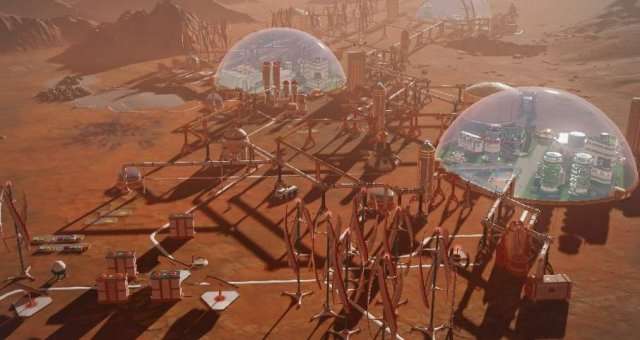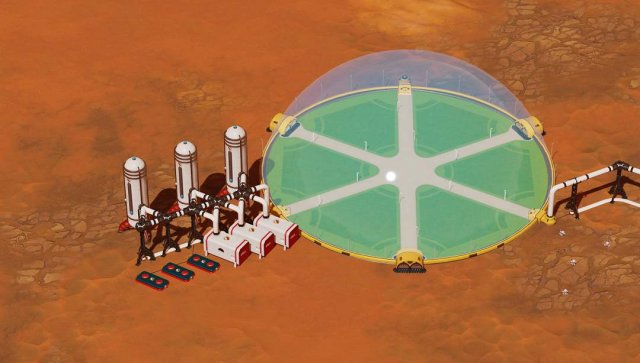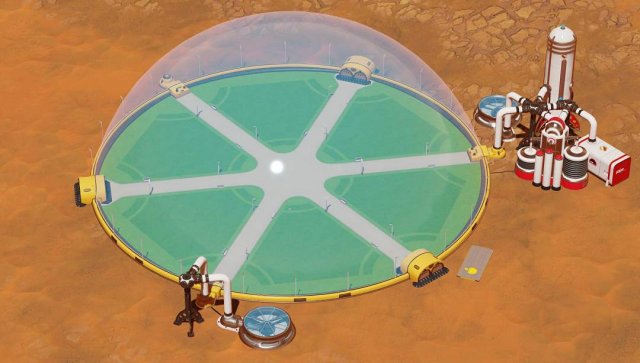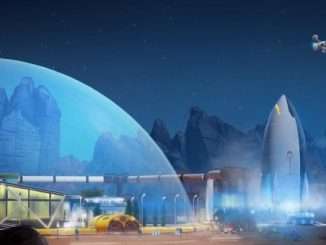
A few tips and tricks for the life support and power storage buildings. Even the most experienced of Surviving Mars gamers forget and undervalue storage!
Other Surviving Mars Guides:
- Starting Checklist (Tips for Beginners).
- Basic Startup Guide to Self-Sufficiency.
- Farm Guide / Best Setups to MinMax Food Production.
- Sponsor and Commander Perks List.
- How to Manage Drones (Easy Way).
- Guide to Your First Domes.
Why Do We Need It?
All credit goes to enzovirus!
Seems an obvous and easy question… Realistically, there’s more reasons than you’d think!
1) First and foremost, dust storms:
- Happens to the best of us, your MOXIEs and Vaporators won’t work during dust storms, they can last a few hours or several days and you get very little time to react. A good supply of Air and Water is needed or your colony falls flat on it’s face.
- Solar panels won’t work (unless in a dome) either, so that “boost” you get during a day when your solar panels usually wake up and balance your power out won’t happen.
2) Less obvious, meteors:
- A few “well placed” meteors and your life support grid can be ruined, a good backup supply can help cover the loss and leaks while repairs are underway, during heavy meteor storms you’ll face more leaks than you can quick repair
- “Well placed” meteors, anyone ever notice they always hit the most vulnerable points, the parts you can’t survive without? You’re tempting fate by not having a backup and like a vulture the game will just happen to strike when you’re down, we’ve all seen it!
3) Growing too fast:
- The game is quite slow to tell you you’re running out of air, developing a colony too fast without growing your life support and power grids is very common and fatal mistake. Find a system that works best for you, just some way to remember to set up water, power and air production and storage (even something simple like every dome gets 1 MOXIE and Vaporator and has one connection setup purely as backup).
- Placing a lot of farms or ranches at once seems smart, but don’t do it! It’s smart for a few minutes until it’s drained your water (air will usually be fine). The old rule “measure twice cut once” helps here too, plan what crops you’ll be growing long term and make sure you’re able to cover the water cost long term, a good stash of storage can save you a lot of trouble here…remember crps without water fail, wasting the water and crop growing time!
- The new Self Sufficient Dome comes with a bit of storage with it, a good starting point if you’re unsure what you might need early on.
Air
Essential for human survival (Earthling or Martian).
Produced by MOXIEs, consumed by humans and the occasional building. Farms do not produce oxygen, they only reduce the amount a dome requires.
Mid to late game when you’re trying to produce a lot of air, or want to reduce the number of shifts a building is active for (save power) this type of set up might help. (Or early game minus the tribs).
Water
Depeding on your starting location, this can be easy to maintain, or a brutal fight for survival! If you can find an early supply, store a fair bit up in preparation for a colony / dome. Getting a good supply before the people arrive will save you when things go wrong. Landing your first group only to get hit by a dust storm can kill off everyone far too easily.
Surprisingly, Farms and ranches can be the single biggest drain on water, they need a good steady supply or crops will fail and that can ruin your colony through starvation…those agg domes are great (better with water saving spires…) but don’t overlook how much they can deplete your supply.
On cold wave prone maps, don’t under estimate the usefulness of sub surface heaters, keeping your stored water watery is important, cold waves frequently put a massive drain on your power and unless you have life support buildings set to max priority then they’re at risk of shutting down too.
A little setup I use mid to late game, keeps a good supply of water for the colony with several of these around. Or early game minus the tribs, 5 tanks might seem overkill, but you can start at 2-3 and add later on.
Not strictly storage, but deposits… Plan ahead, just because you have a deposit, an early supply, don’t stop looking and thinking ahead, it’s better to have a few nearby you don’t need yet with the comfort of knowing where they are than a frantic search as people dye one by one.
Power
No power, no survival. One of the earliest buildings you can make is the solar panel (and the large version) but this only works 2/3 shifts, if you want buildings running overnight you’ll need batteries.
A cheap and stable early colony frequenly relies on solar panels and batteries, charging during the day, draining overnight. Seems simple enough.
Mid to late game, colonies get more advanced, but a lot will still rely on batteries and the atomic versions to hep balance day and night cycles. Having more power storage than you’re producing means you’re not wating production. Even if you don’t use solar panels, have a group of batteries absorbing that excess power, your colonists will be glad!
Pin Bar
Don’t overlook these little beauties…be one step ahead!
The game will only tell you when you’re running low, not when you’re using more than producing. If you click on a storage building and pin it to your bar, you can keep track of how much is stored.
I’ve watched loads of youtube videos and streams, and nobody seems to do this, then they have to react to a loss of air / power / water while losing colonists.
You can keep track here at a glance, why wait till the last second to fix a problem if you can prevent it days earlier?
If you’re like me and run several different grids, you can pin buildings from each and monitor the levels. Naming the each building can help track which grid is suffering the most, and help locate it quickly (r selecting the building and just going there too!)









Be the first to comment